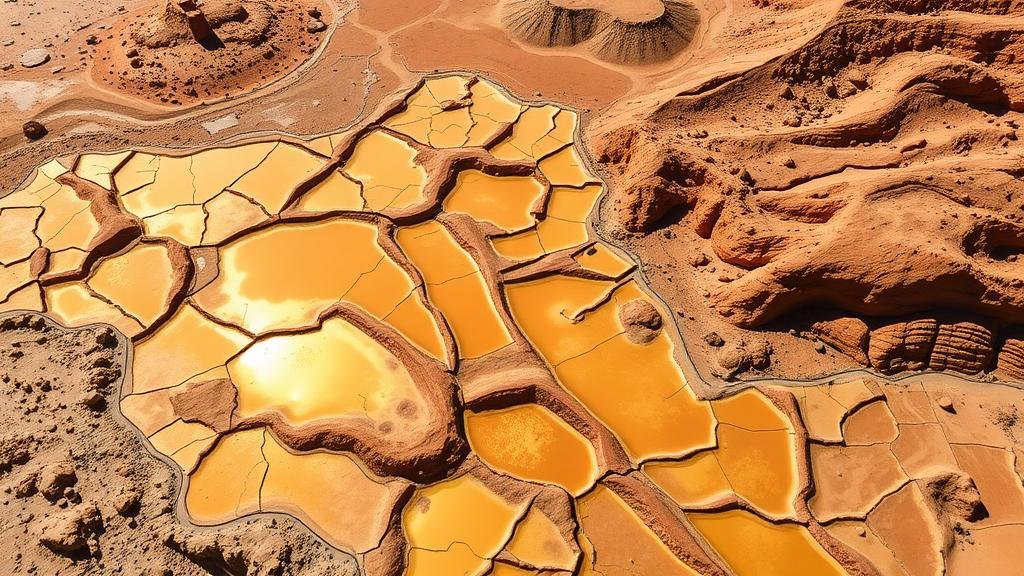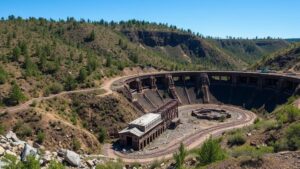Spotting Gold Deposits in Ancient Lakebed Sediments in Arid Regions
Spotting Gold Deposits in Ancient Lakebed Sediments in Arid Regions
The quest for gold has driven human civilization for centuries, often leading explorers to remote and inhospitable areas. Arid regions, characterized by their dry climates and ancient geological formations, can conceal significant gold deposits. This article provides an educational overview of spotting these deposits within ancient lakebed sediments, particularly focusing on the mechanisms, methodologies, and examples of successful discoveries.
The Geological Context of Ancient Lakebeds
Ancient lakebeds, or playa deposits, are formed through the sedimentation of minerals in water bodies that have long since dried up. Over millennia, these sediments can become rich in various minerals, including gold. Understanding the geological history of these formations is crucial for potential exploration.
Key factors in recognizing gold-bearing lakebeds include:
- Proximity to volcanic or tectonic activity, which can introduce gold rich fluids.
- Deposition in a closed basin where mineral content is concentrated due to evaporation.
For example, the Carlin Trend in Nevada showcases ancient lakebeds that have yielded significant gold deposits, illustrating how these geological settings can be rich in mineral resources.
Geological Indicators of Gold Deposits
Several geological indicators can signal the presence of gold in ancient sediments. Geologists use these indicators to guide their exploration efforts:
- Concentration of Heavy Minerals: Gold is a heavy metal that tends to accumulate with other heavy minerals. Identifying the presence of minerals like magnetite or zircon can suggest nearby gold.
- Quartz Veins: Gold often occurs alongside quartz. The presence of quartz veins within sediment can point to mineralization.
- Alteration Zones: Hydrothermal alteration can occur near ancient water sources, where fluids interact with rocks. These zones can often concentrate gold.
Geochemical analysis, including methods like X-ray fluorescence (XRF), can be employed to detect these indicators and confirm the presence of gold.
Exploration Techniques
Modern approaches to finding gold deposits in ancient lakebeds integrate multiple methodologies that can be tailored to specific terrains.
- Remote Sensing: Satellite imagery and aerial photography can help identify surface mineralogy and structures indicative of ancient lakebeds.
- Geophysical Surveys: Techniques such as resistivity and ground-penetrating radar (GPR) provide data on sub-surface characteristics without extensive excavation.
- Soil Sampling: Sampling the surface and subsurface soils can yield valuable data on mineral content, including gold anomalies.
In one instance, a company exploring the historic lakebed deposits in Australia utilized a combination of GPR and soil sampling, leading to the detection of deposits previously overlooked due to limited surface exposure.
Case Studies and Successful Discoveries
Numerous successful gold discoveries have been made in ancient lakebeds, underscoring the potential of these geological formations:
- The Witwatersrand Basin, South Africa: Recognized as the richest gold-producing area in the world, the Witwatersrand consists of ancient shorelines of lakebeds that have been extensively mined for their gold reserves.
- Lake Victoria Goldfields, Tanzania: Gold deposits in the lakebed sediments of this region have led to significant mining operations, and ongoing exploration continues to reveal new opportunities.
These case studies exemplify how geological insights combined with modern exploration techniques can lead to significant gold discoveries.
Challenges and Considerations
Despite the potential for discovery, gold exploration in arid ancient lakebeds presents several challenges:
- Environmental Concerns: Mining activities can disturb fragile desert ecosystems, necessitating careful planning and regulations.
- Access and Infrastructure: Remote locations may lack adequate infrastructure, making exploration and eventual mining more complex and costly.
Addressing these challenges requires a commitment to sustainable practices and innovative approaches to exploration that minimize environmental impacts.
Conclusion
The pursuit of gold in ancient lakebed sediments in arid regions offers a fascinating intersection of geology and mineral exploration. By understanding the geological context, utilizing various exploration techniques, and learning from successful case studies, geologists and prospectors can increase their chances of detecting valuable gold deposits. But, balancing the potential benefits with environmental responsibilities remains a key priority for sustainable exploration.



